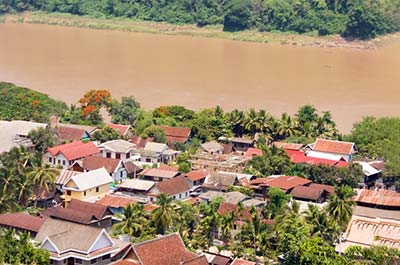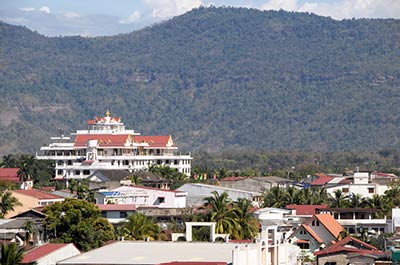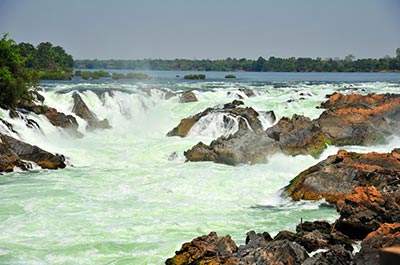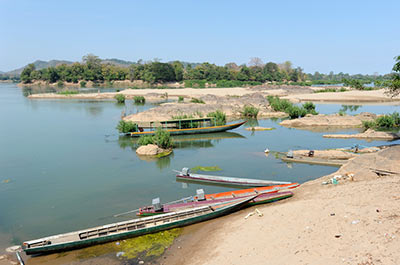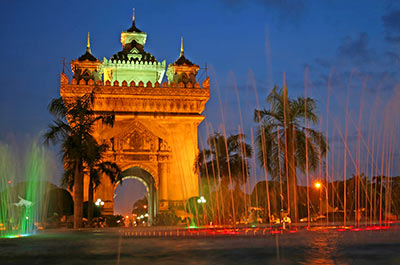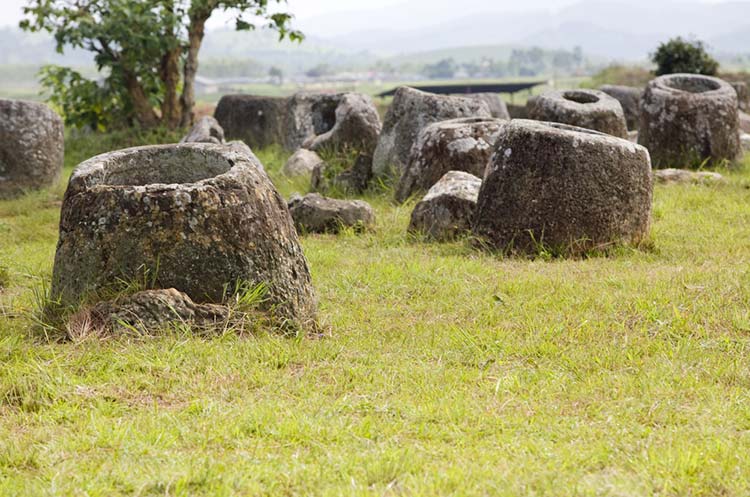
Plain of Jars
2,000 Year old stone jars used in burial ceremonies scattered across the fields
The Plain of Jars is a group of fields containing thousands of stone jars cut out from rock thousands of years ago.
The sites are located around the city of Phonsavan in Xiangkhouang province, Northeast Laos. While some of the sites contain just a few jars, others contain hundreds many of which are broken or have fallen over.
The Plain of Jars have been submitted to the Tentative List of UNESCO World Heritage Sites.
Plain of Jars history
The history of the stone jars is shrouded in mystery. The jars are believed to be about 2,000 years old. They come in varying sizes up to three meters high, weighing up to several tons. Most of them were sculpted from sandstone rock.
Burial rituals
Very little is known about the people who created the jars. Although their purpose is not known with certainty, archaeologists believe they were used as urns in burial rituals.
What was inside the jars?
All jars are now empty. During archaeological research in the 1930’s glass beads as well as burnt bones and teeth were found inside. Around the jars archaeologists found grave goods and bones.
Sealed off with lids
The jars were probably originally sealed off with lids. Today only a single jar contains one. A few stone lids have been found between the jars, others might have been made of wood or other perishable material that has long gone. Stone discs between the jars mark the location of a grave.
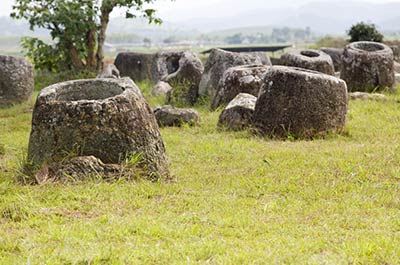
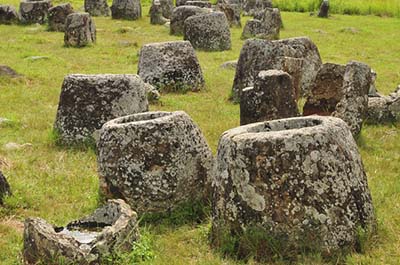
Private 3 Day Tour Luang Prabang to Plain of Jars, Vientiane
- Pick up from Luang Prabang hotel, transfer to Phonsavan
- Stops at minority villages, Phoukhoun market & Buddha cave
- Start day 2 with visit to Ban Na Phia spoon making village
- Explore Plain of Jars site 3
- Explore Plain of Jars site 2
- Visit ancient Wat Phia Wat temple and That Foun stupa at Muang Khoun, old capital of Muang Phuan Kingdom
- Explore Plain of Jars site 1
- At day 3 transfer to Vientiane
- Private tour
- Duration approximately 3 days
Purpose of the jars
Several theories and legends exist about the purpose of the jars. Local legend tells that they were made by a race of giants to use as cups to drink rice wine. Another story tells the jars were used to store water for the dry season, or a King had the jars made to store rice wine after a military victory. As remains of human skeletons were found inside the jars it is now believed they were used as urns in burial rites.
Remnants of the secret war
Signs of the “secret war” are clearly visible at several of the sites, in the form of bomb craters and damaged jars. During the Vietnam war enormous quantities of bombs were dropped on Laos, many of which failed to explode. Although clearing works of unexplored bombs have been carried out at the most visited sites, it is strongly recommended to stay within the marked paths.
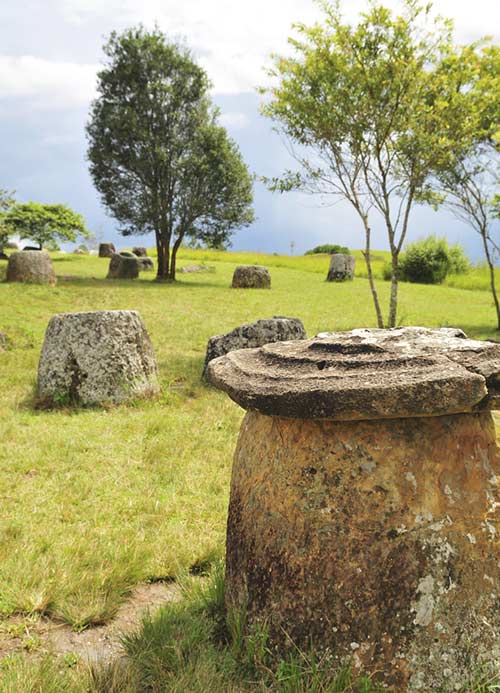
Site 1 Thong Hai Hin
Thong Hai Hin, which translates to “Stone Jar Plain” is one of the largest sites with over 300 jars. The site, also known as Site 1 is located about 15 kilometers South West of Phonsavan. The large area surrounded by a fence is adjacent to a Laos army military base.
Signs at the site inform the the Mines Advisory Group (MAG) has performed clearing works of unexploded bombs. White and red markers mark the areas where clearing works have been carried out. It is recommended to stay within the areas marked by white markers where intensive clearing has been done as opposed to the areas marked with red markers where only visual clearing has been carried out.
A path from the entrance gate leads to the top of a small hill where the first group of jars is found. From the hill a path leads to a second group of jars a few hundred meters away. The only jar containing a stone lid was found here. Thong Hai Hin is the only site where a decorated jar was found, bearing a sculpted human figure carved into the stone. A cave at this site was probably used as a crematorium; human remains were found here in the 1930’s.
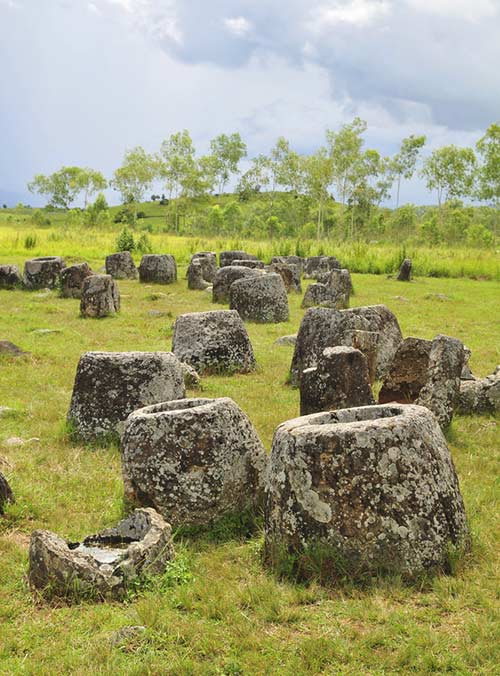
Location
The sites are located in the Phonsavan area in Xiangkhouang province, Northeast Laos.
How to get to there
The easiest way to get there is to book a tour with a Phonsavan travel agent. Alternatively, you can get to Thong Hai Hin (Site 1) with a jumbo, a 3 wheeler converted motorbike with benches in the back. A round trip will cost around 40,000 Kip (about US$ 5), the driver will wait. If you have a group you can charter a minivan for about US$ 60 per day, depending on season and demand.
The quickest and most comfortable way to get to Phonsavan is by air from Vientiane. Laos Airlines has daily flights from Vientiane to Xieng Khouang airport of Phonsavan. Flights take 30 minutes, the fare is about US$ 100.
Buy tickets online
Get tickets online at the 12Go website.
Opening hours
Opening hours are daily from 9 am until 5 pm.
Entrance fee
Entrance fee is 10,000 Kip (US$ 1.30) per person to each site.
Attractions around Laos


Private 3 Day Tour Luang Prabang to Plain of Jars, Vientiane
- Pick up from Luang Prabang hotel, transfer to Phonsavan
- Stops at minority villages, Phoukhoun market & Buddha cave
- Start day 2 with visit to Ban Na Phia spoon making village
- Explore Plain of Jars site 3
- Explore Plain of Jars site 2
- Visit ancient Wat Phia Wat temple and That Foun stupa at Muang Khoun, old capital of Muang Phuan Kingdom
- Explore Plain of Jars site 1
- At day 3 transfer to Vientiane
- Private tour
- Duration approximately 3 days
